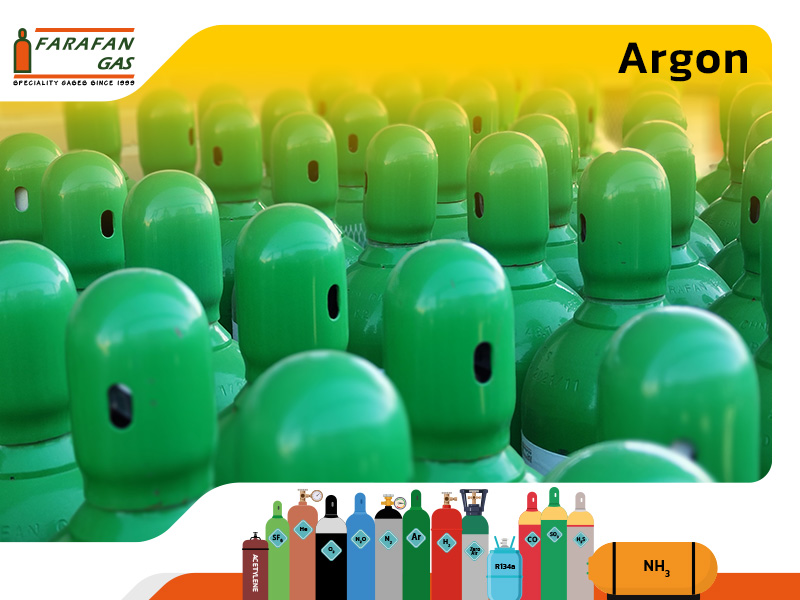History
Argon, which means inactive in Greek, refers to the inactive chemical nature of this substance. In 1785, Henry Cavendish suggested that argon was present in the air. In 1894, Lord Riley and William Ramsey separated argon by removing nitrogen, oxygen, carbon dioxide, and water from the air. Argon was also observed in 1882 following independent research by Naval and Hartley as strips in the color spectrum of air, although they could not identify the constituent element of these lines. Argon was the first noble gas to be identified.
Safety and classification
Argon is non-flammable and non-toxic gas itself. The use of argon in electric arc welding produces carbon monoxide and carbon dioxide. Nitrogen and ozone oxides may also be produced.
Sources
The most common source of argon is an air separation plant. Air contains approx. 0.93% (vol.) argon. A crude argon stream containing up to 5% oxygen is removed from the main air separation column via a secondary (“side-arm”)
Applications
- Argon is one of the most common carrier gases in gas chromatography.
- Argon is also the choice gas for ICP spectroscopy.
- Argon is used in atomic absorption spectrometry as a blanket gas in the graphite furnace.
- One of the most common applications of argon, either pure or in various mixtures, is as a shielding gas for arc welding.
- Argon is used in blends with, for example, fluorine and helium in excimer lasers.
- Argon is used as an insulation gas in high-efficiency multipane windows to improve thermal insulation.
- Argon is one of the principal gases used for filling incandescent (filament) lamps, generally in a mixture with nitrogen, krypton or neon, for phosphorescent tubes in mixtures with neon, helium and mercury vapor and for thyratron radio tubes, in mixtures with neon.
- The argon-oxygen decarburising (AOD) process is the most common method of refining stainless steel, and uses large quantities of both gases supplied either in liquid form or via pipeline from an on-site plant.
- Argon is used in the iron and steel industry to prevent oxidation of molten metals and alloys and for degassing and desulphurization of molten steel and iron baths.
- The pharmaceutical industry uses argon to displace oxygen in the top of intravenous drug containers, extending product shelf-life.
- Argon is, sometimes in combination with nitrogen, used to inflate airbags.
- Argon, R-740, is used in gas mixtures for non-CFC ultra-low temperature refrigeration applications.
- Argon is used, often in combination with nitrogen and/
- or carbon dioxide, as a clean fire extinguishing gas,
- since the inert properties do not damage any materials
Tehran Farafan Gas supplies argon gas with purity of 99.9999%, 99.9995%, 99.999% according to customer needs, in 2 to 50 liter cylinders, etc.

